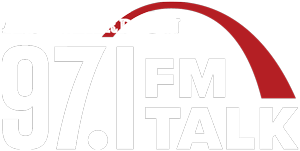During fall, adjusting your sprinkler system should be part of your regular outdoor maintenance. Early fall looks a lot like summer – especially in the St. Louis area – so your lawn will still need to be watered at the same rate as summer.
As fall progresses, though, you’ll find that your lawn doesn’t need as much water, and you need to adjust your sprinkler system to meet the decreased needs of your yard.
As a general rule, your lawn needs an average of two inches of water per week during a hot, dry summer and a ½ inch per week during fall.
If you need help determining the exact amount of water your lawn needs, contact the Pro Outdoor team. We’ll help you get your sprinkler system adjusted for fall and ensure your lawn stays healthy.
When to Stop Watering Your Lawn
When the temperatures begin to drop and the days are shorter, your grass growth slows down. With less heat and sunshine to evaporate the water, your lawn needs less to drink, but that doesn’t mean you suddenly stop watering altogether.
Conditions tend to vary, especially in the Midwest, but you can follow these general rules for when to stop watering your plants in fall weather:
- Continue to provide supplemental moisture as needed until the ground freezes
- If you receive one inch or more of precipitation per week, you don’t need to water
- During times when the weather is warm and dry, water a few times a week
- If you have a new lawn or one that has been overseeded, you need to maintain regular watering practices for root establishment and growth promotion.
Adjusting your watering schedule in the fall will give your wallet a break and prepare your lawn for the upcoming winter months.
Install a Rain Sensor
Some areas might see an increase in rainfall as autumn rolls in, which means your lawn and plants will need less water from your sprinkler system. You don’t want to overwater your lawn, so installing a rain sensor might be the way to go.
Some areas might see an increase in rainfall as autumn rolls in, which means your lawn and plants will need less water from your sprinkler system. You don’t want to overwater your lawn, so installing a rain sensor might be the way to go.
The rain sensor will shut off a scheduled watering session if the grass already has enough water, and you don’t have to worry about over-saturating your lawn.
Prepare for winterization
At the end of fall, you’ll need to winterize your system. Sprinkler winterization is turning off the system and removing all of the water, which is why you want to get it done before a freeze. You don’t want to damage your system because water froze in the pipes over the winter.
Sprinkler winterization usually takes place from September through November. Your lawn doesn’t need as much or any water from your sprinkler system, so it’s the perfect time to schedule a sprinkler winterization appointment with Pro Outdoor.
Your sprinkler system is an investment, so you should treat it like one. Leave it to the professionals to winterize your sprinkler system. They’ll get it done right, and you can rest easy knowing your system will perform optimally when spring rolls back around.
Schedule a sprinkler fall winterization service appointment with one of our expert technicians today and have one less thing to worry about come spring.
